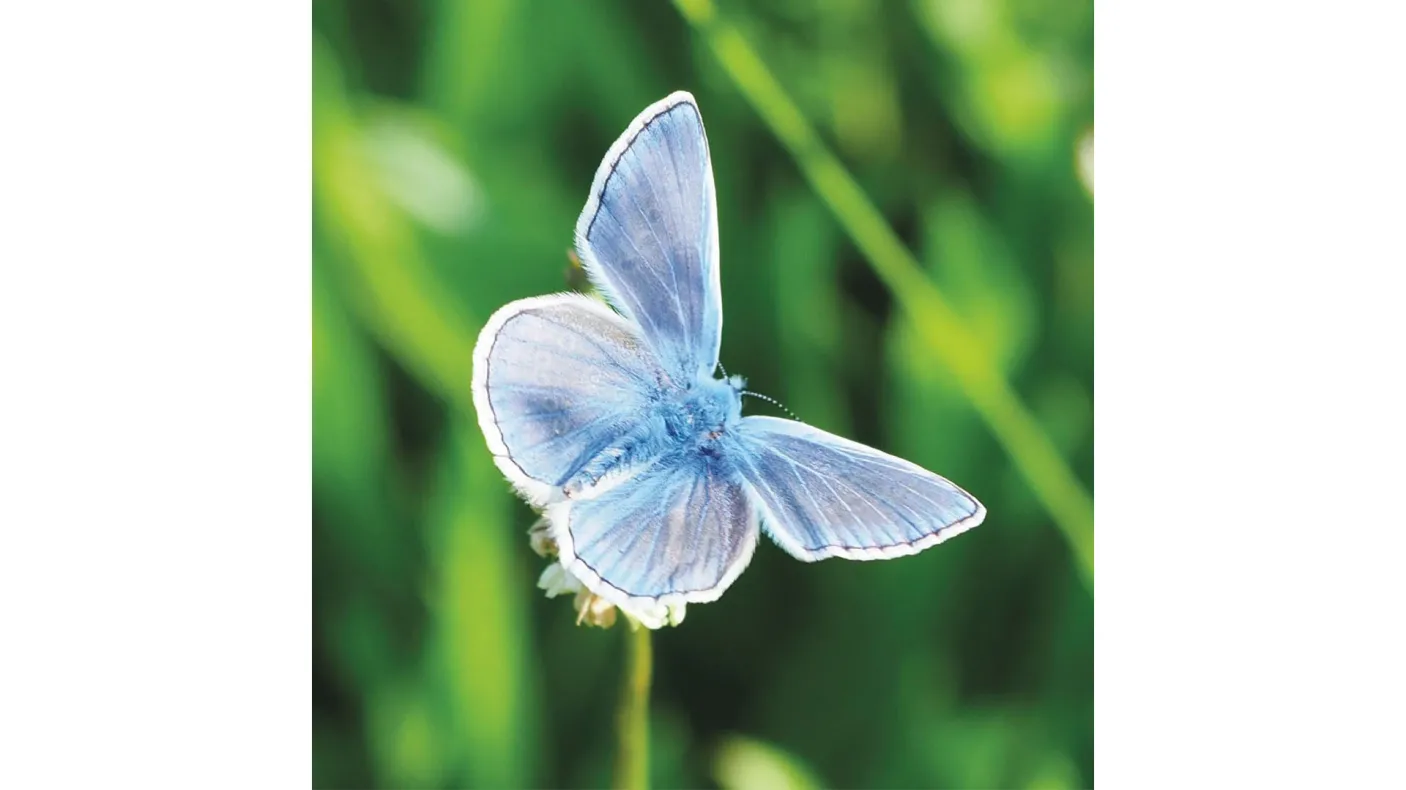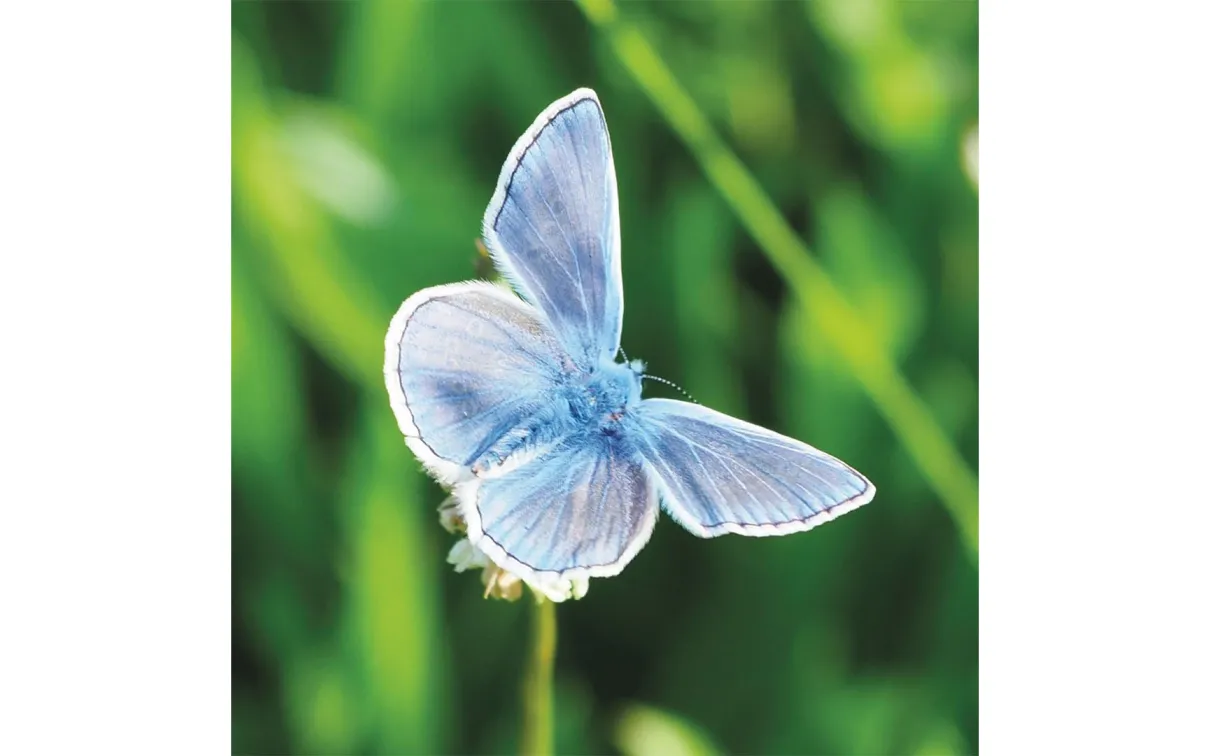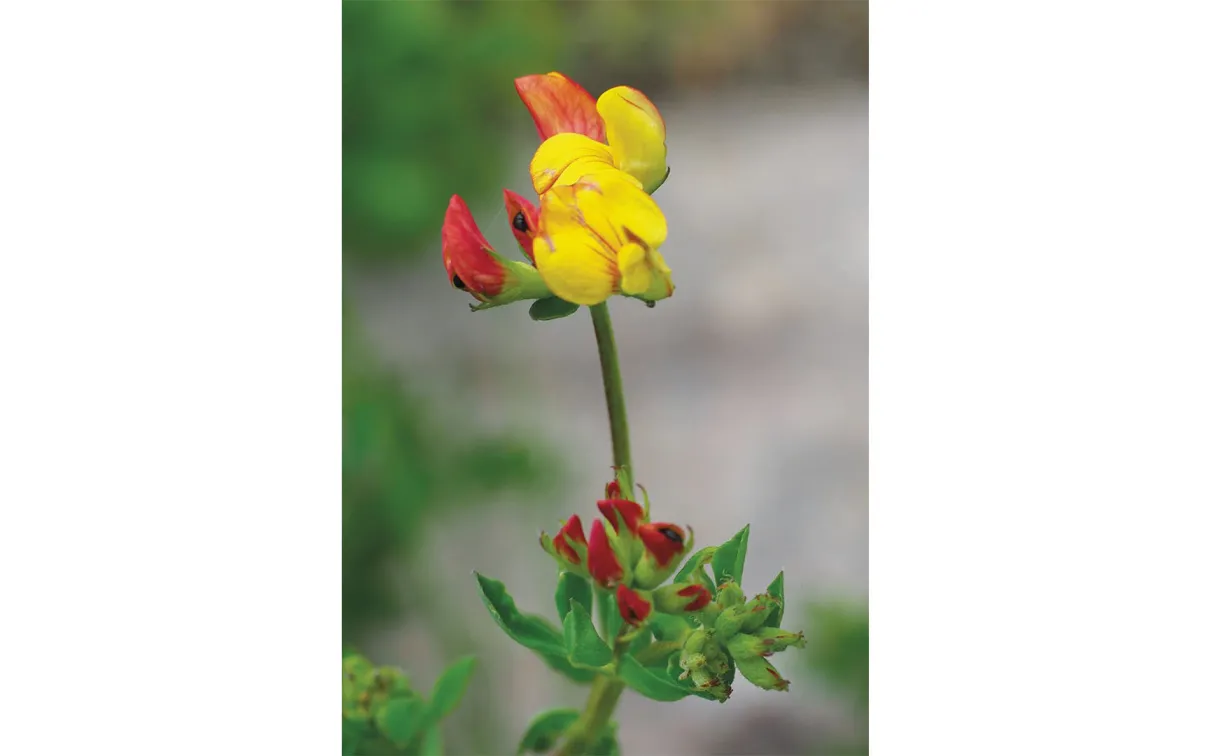New Blue on the Block
ROM Field Guide to Butterflies of Ontario
When we published the ROM Field Guide to Butterflies of Ontario in 2014, we mentioned that the European Common Blue butterfly (Polyommatus icarus) was a species to watch for in Ontario. Native to Europe, North Africa, and Asia, this species had recently been introduced to Canada. First recorded in 2005 near Mirabel Airport in Quebec, it has since been slowly spreading east, south, and westward, with the earliest Ontario record in 2012. I first saw one during a Toronto centre butterfly count in July 2020 at Pottery Road and Bayview Avenue. There are now many records in the GTA.
A much smaller “Blue” than ROM’s beloved blue whale, this species is still large compared with some of our native blue butterflies. It has a wingspan of 28–36 mm, with the upperside of the males a vibrant blue. The females are brown with a blue dusting and orange spots along the wings. Both have lots of dots on the underside with an orange row along the edge of the wings.
Like all butterflies, the European Common Blue undergoes complete metamorphosis. The eggs take around seven to 14 days to hatch into small pale green slug-like caterpillars with yellow stripes. Since insects have an exoskeleton, they must shed their skins to grow. This is called a “moult,” with the caterpillar stage in between being called an “instar.” These caterpillars will moult four times as they grow, meaning there are five instars of the larvae.
Gallery
The caterpillars feed on bird’s-foot trefoil
The caterpillars feed on bird’s-foot trefoil (Lotus corniculatus), black medick (Medicago lupulina), or white sweet clover (Melilotus albus), plant species also introduced from Europe, North Africa, and Asia. The assumption is that a pregnant female (or females) arrived on a plane and laid eggs on one of these plants in fields near the airport. The yellow- or white-flowering plants belong to the pea family (Fabaceae) and can be commonly found near roadsides across North America.
Not always, but sometimes, something amazing happens: ants take the European Common Blue caterpillar into their nest. The ants will protect the caterpillar from predators and parasitoids and feed it ant eggs and larvae. In exchange, the caterpillars secrete (from specialized glands) a sweet liquid or honey - dew. This mutualistic relationship is called “myrmecophily,” and it occurs between specific species of ants and other organisms, especially other lycaenid butterflies. Luckily for the European Common Blue, there is a native species of ant, the Turfgrass or Labour Day Ant (Lasius neoniger), that has adapted to tend it. This ant species has also been seen to partake in myrmecophily with a native butterfly species, the Silvery Blue (Glaucopsyche lygdamus).
After the last caterpillar instar, an olive green–brown chrysalis is formed at the base of the plant or in the ant nest. Once metamorphosis is complete, the adult lives for three weeks, feeding on nectar and animal excrement. Many butterflies (typically male) will lap up minerals and salts in animal poop using the legulae (microsponges) at the tip of the proboscis (straw-like, hollow mouthpart). There can be two to four generations per year depending on the local climate.
It is likely that the butterfly may eventually match the range of the host plants. Do we need to worry about this butterfly? Is it “invasive”? Although this is an introduced species, it is feeding on introduced plant species and doesn’t appear to be competing with other butterflies for food sources, so I think we can enjoy the European Common Blue. While spreading in North America, the butterfly’s population has declined in its native range, likely due to habitat loss, making the European Common Blue much less “common.” Continued monitoring is essential.
Don’t be surprised to see this colourful little butterfly flitting about in a yard or park near you! Be sure to post your images on the iNaturalist app so that scientists can use that information to track this blue butterfly as it moves into even more neighbourhoods.
Antonia Guidotti
Antonia Guidotti is an Entomology Technician at ROM.







